CHASING THE MYSTERY BEHIND BIOLUMINESCENCE IN PUERTO RICO
Enviado el 29 junio 2017 - 7:26am
Este artículo es reproducido por CienciaPR con permiso de la fuente original.
Contribución de CienciaPR:
Fuente Original:

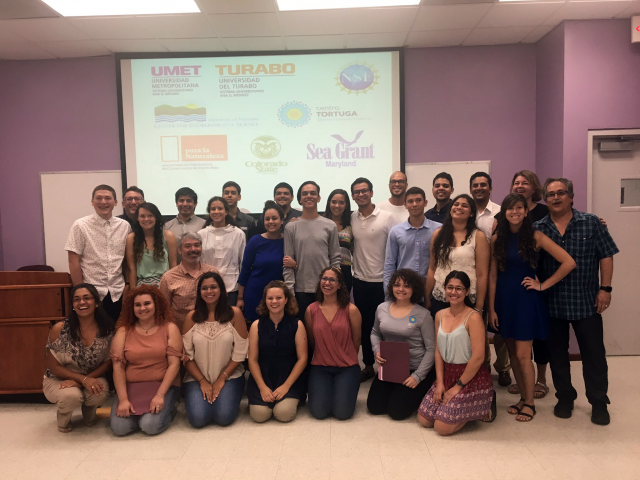
It can be a paddle from a kayak, or a swift-swimming fish, but a light disturbance in the waves will trigger a faint bluish glow from below the waves in three bays in Puerto Rico.
This bioluminescence can be seen under the right conditions in various animals and places worldwide, but never as consistently as in these three bays, and it’s raising questions that likely only science can answer.
A group of 16 undergraduates from two Puerto Rican universities, with help from two University of Maryland Center for Environmental Science researchers, will spend a week this month investigating the plankton behind the glow in hopes of answering the so-far unanswerable.
“When you find an animal that lights up, you learn a lot about that animal,” said Jamie Pierson, a biological oceanographer from UMCES’ Horn Point Laboratory who focuses on zooplankton ecology. “What hasn’t been studied quite as extensively is the ecology of that system, so why are they here and why are they so happy here?”
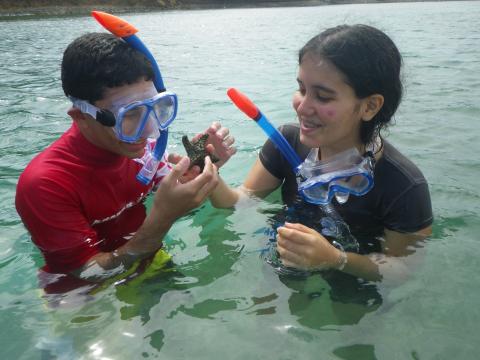
The field study is part of a new research and education center that Maryland Sea Grant Collegeestablished with funding from the National Science Foundation (NSF). Its name is Centro TORTUGA—which is Spanish for turtle, but stands for Tropical Oceanography Research Training for Undergraduate Academics.
The initiative is a unique offshoot of a renowned Maryland Sea Grant program, supported by NSF, called Research Experiences for Undergraduates, a 12-week summer program that pairs students with mentors for immersive marine research and an individual project on Chesapeake Bay.
An REU-like program in Puerto Rico can open a door to marine and environmental science as a career option through new opportunities in research and professional development, Pierson said.
“It seems like there’s not as good communication to students in Puerto Rico as to what careers are available in marine and environmental sciences,” he said. “The idea here is to show them that they can do this, that science is not just medicine and engineering, that there’s other things out there.”
It can benefit the Maryland program, too, said Fredrika Moser, director of Maryland Sea Grant.
“We’ve worked hard to make the REU program as diverse as possible, but it became clear as we were working on this in the 2000s that there were pipeline issues,” she said. “How do you get students from a lot of different backgrounds to be able to apply for and participate in an REU program like Maryland Sea Grant’s? That’s a puzzle for lots of scientists interested in strengthening American science.”
The puzzle started coming together in 2011 when Ruby Montoya, a faculty member from Universidad Metropolitana in Puerto Rico, approached Moser about helping her own students get some research experience. Over the next several years, Maryland Sea Grant would help establish and run several pilot programs that would become the foundation for Centro TORTUGA.
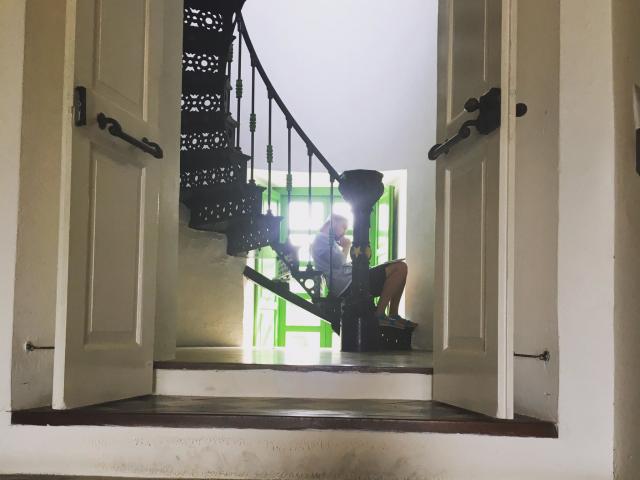
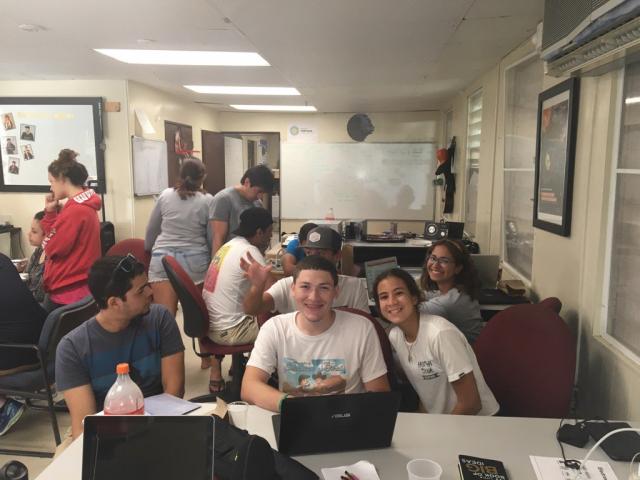
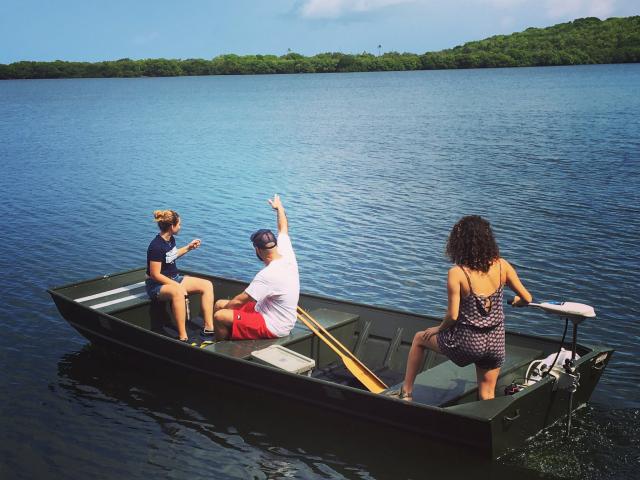
When you find an animal that lights up, you learn a lot about that animal. What hasn’t been studied quite as extensively is the ecology of that system, so why are they here and why are they so happy here?
Each year, more students participate in the research experience. By 2014, a student from Puerto Rico had joined the REU program. By 2015, another Puerto Rican university, Universidad del Turabo, had students participating in the research experience.
That success helped Maryland Sea Grant earn a three-year grant from National Science Foundation grant. This was the first academic year for Centro TORTUGA.
Moser credits the mentors like Pierson and Lora Harris, an estuarine ecologist at UMCES’ Chesapeake Biological Laboratory, for REU’s success and had turned to them to kick start the Puerto Rico project.
Thinking of her own introduction into marine science at a young age, Harris appreciates that the program caters to students early into their undergraduate education, whereas the REU program targets rising seniors. She also sees the need for and value of diversity in the field.
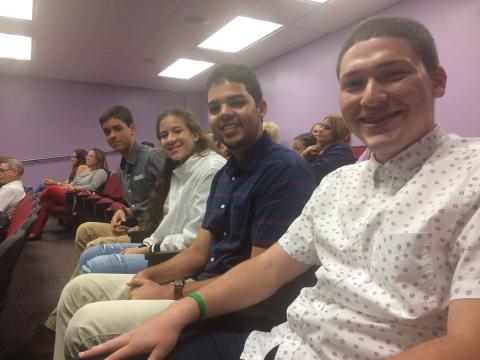
“We know that hard problems and challenges in the environmental sciences are going to need creative solutions and there’s a lot of science that tells us a better way of approaching challenging problems is to have a diversity of perspectives,” Harris said. “So I think that it is imperative for our work on sustainability issues and in solving hard challenges to take advantage of a broader pool of talent and a broader pool of perspectives. If the geosciences remain all white and predominantly men, we’re going to lose those opportunities.”
Harris and Pierson go to Puerto Rico each spring to oversee the students in the May field study. This year, they will spend about a week studying one of the three bioluminescent bays, Laguna Grande, located near San Juan. The land trust that manages this bay, Para la Naturaleza or PLN, is a highly supportive partner and rents the group the space they need, including a historic lighthouse to sleep in and a conference room for their makeshift lab.
The group will analyze sand on the bay’s beaches, count seagrass in the lagoons and around the lagoon mouth, and study growth and grazing rates of the organism that glows, a single-celled algae called Pyrodinium bahamense.
“We look at a few different aspects of the lagoon and the surrounding area because one of the things is understanding what’s going on in the surrounding area to understand why the lagoon is different,” Pierson said. “There’s hundreds of lagoons ringing the island of Puerto Rico, but there’s only three that are consistently bioluminescent. That’s the big question, why? What makes these things so special?”
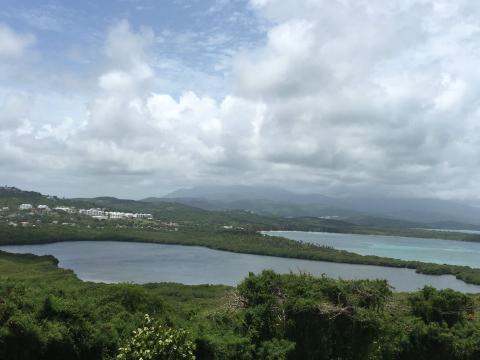
These tiny plankton can be found in each of the three bays, grouped in high concentration.
They soak in the sun through the day and at night, if the water goes undisturbed, they stay invisible to the naked eye, but tourists traveling through on kayaks or even other fish swimming by will inspire these creatures to emit streaks of pale blue.
There are many hypotheses about why it glows. Pierson said it’s likely a type of predator response because the glow follows a pressure wave in the water.
“It’s been called the burglar alarm hypothesis because they light up when a predator is near and it tells all their buddies, there’s a predator nearby and they should swim away,” he said.
In Florida, these organisms have previously produced a toxin and so when they bloom, it creates problems for other life in the water through a harmful algal bloom. They aren’t considered harmful in Puerto Rico, Pierson said.
The lagoons there are important nurseries and really productive systems as a whole, he said. Also joining Pierson and Harris will be current Horn Point graduate student, Juan Alvarez-Rosario. He came into the project as a volunteer aide with Montoya, who was his advisor when he was an undergraduate student at Universidad Metropolitana.
We know that hard problems and challenges in the environmental sciences are going to need creative solutions and there’s a lot of science that tells us a better way of approaching challenging problems is to have a diversity of perspectives.
Like the students in the initiative, Alvarez-Rosario had an interest in the bioluminescent bays from growing up in Puerto Rico. He remembers the first time he saw the glowing water.
“It’s one of those things that blew my mind and stayed with me forever,” he said.
The spectacle also raised questions he really wanted to answer.
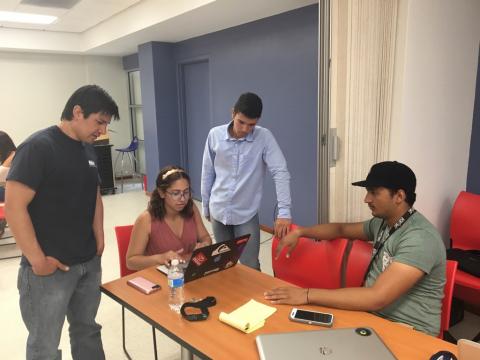
Alvarez-Rosario came to Maryland for graduate school and eventually UMCES to study the ecological drivers in bioluminescent bays. Pierson and Harris are his advisers. He’s proud the work he does can make a real impact.
“Discovering things, like how this alga grows and how it reacts to different conditions, that can be translated to better management practices that will have an impact on the immediate community,” Alvarez-Rosario said.
The bioluminescence in Puerto Rico is important because of its decades-long role in the Caribbean island’s tourism industry. While bioluminescence is more consistent in the three Puerto Rican bays than anywhere else, the bioluminescence can be weaker on occasion, but without clear reason, Alvarez-Rosario said.
Pierson said the lagoons don’t have strong currents, but that may change seasonally, flushing some of the organisms out.
Alvarez-Rosario makes multiple trips to Puerto Rico each year to study the ebbs and flows, but makes a point of planning one of his study periods around the May field study so he can continue to work with the Puerto Rican students.
“I still stay in contact with some of our former students and they will say, ‘This is the best experience I ever had,’ or ‘Why didn’t this happen earlier?’ They really have a great time and I think that’s a big achievement of the program: to get students to be happy about science and passionate about it,” he said.
Students can return each year until they graduate from college, gaining research experiences as well as networking opportunities. Moser hopes the students share their experiences with others and generate more interest.
“What we really wanted to do was to give them the skillset so they could compete and really gain confidence so they would be willing to move off the island and participate in research in the continental United States,” she said.
A goal of the initiative is to offer professional development opportunities that can aid the students in starting a career in science. Centro TORTUGA aims to partner with local and state government agencies and scientific organizations, such as United States Geological Survey and the National Oceanic and Atmospheric Administration. This way, the students can meet other scientists to understand their work in and around Puerto Rico and make connections that could translate into jobs or internships.
“It’s supposed to be a give and take,” Pierson said. “We’ve got students who are really interested and need to do projects for Centro TORTUGA and hopefully we find partners who have things that they want to get things done and shared with the world.”







